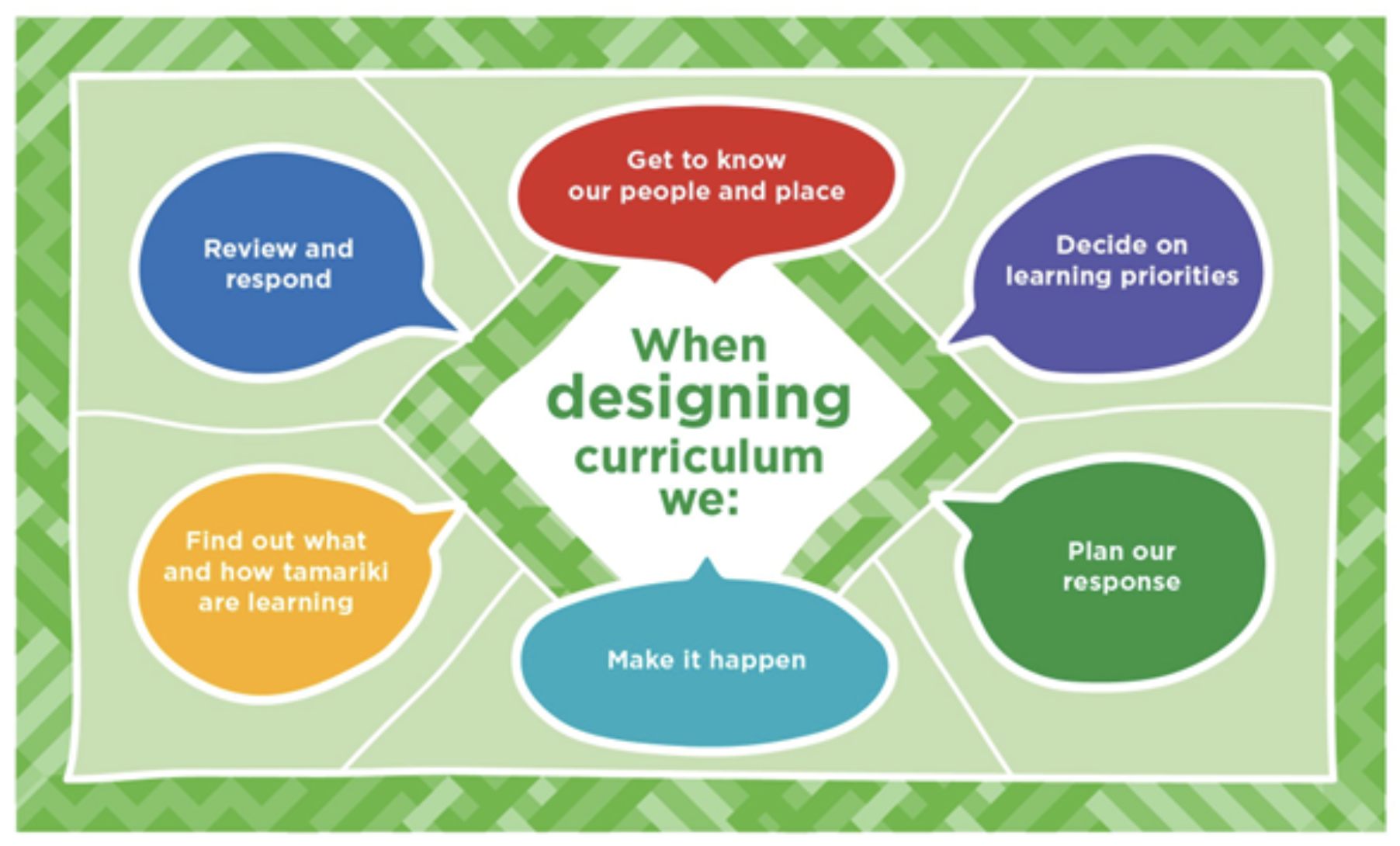
This diagram from te Whāriki symbolises six steps in the process of curriculum design and how they are based on a foundation of te Whāriki itself:
Reflect on what we already know and what we need to find out about our tamariki, whānau and kaiako.
We can think about “what matters here” and about what learning we want to prioritise in our setting.
Some considerations include:
- How can you and your team support learning of tamariki, whānau and kaiako?
- What intentional practices will you use?
- What professional learning and conversations need to happen?
- What changes might you make?
- How might you communicate with tamariki, whānau and kaiako about learning priorities?
- How will you local curriculum priorities ensure that children have the best possible environment to grow, flourish and progress in relation to all components of te Whāriki?
This is where we put our thinking and planning from previous steps into action. As we take action, we may revisit steps in the curriculum design process.
Assessment is the process of seeing and gathering evidence, then analysing and using that evidence to increase learning opportunities for children. Informal assessment occurs in the moment as kaiako listen to, observe, participate with, and respond to children who are engaged in everyday experiences and events. More formal, documented assessment takes place when kaiako write up observations of children’s engagement with the curriculum. They may also take photographs, make audio or video recordings, and collect examples of children’s work.
By analysing such assessment information gathered over time, kaiako are able to track changes in children’s capabilities, consider possible pathways for learning, and plan to support these.
This involves reflecting, reviewing and evaluating how your planning and responding have supported your curriculum priorities.
(from te Whāriki online – you can see more information on this here)
Activity
- Open the te Whāriki resource linked and look at the three curriculum design examples (Everyday, Medium term and Long term) and see how they implement the six steps described above. Look at the other resources on this page and download any you find useful.
- Read the assessment instructions for assessment 04A2 and think about implementation of a local curriculum in general terms (task 1), then start planning for task 2. For task 2 you need to create 3 local curricula (one each for infants, toddlers and young children) and within each curriculum you need to include two learning and development activities appropriate to that age group. Note the assessment schedule states that you need to link each plan to recognised child learning and development theories.
You’ve reached the end of this topic. Let’s go over the key points:
- The six steps involved in the process of curriculum design.
- Planning the implementation of a local curriculum for assessment 04A2.
